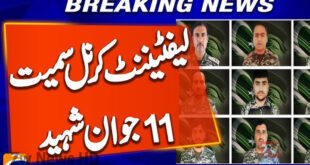⚔️ From Cold Confrontation to Open Warfare
For a long time, Iran and Israel have been secretly fighting. Iran supported Hezbollah and groups in Syria and Iraq; Israel countered with targeted killings and airstrikes. But in 2025, this quiet conflict became active.
The trigger? A combination of Iranian-backed militia attacks near Israel’s northern border and a suspected Israeli cyber strike on a key Iranian nuclear facility. Tit-for-tat responses quickly escalated into direct missile exchanges, with cities in both countries facing the kind of violence previously confined to distant battlegrounds.
🌍 Global Implications: A Chain Reaction
1. Energy Markets in Turmoil
As missiles were launched, oil prices went up. Iran is close to the Strait of Hormuz, where about 20% of the world’s oil travels through. This caused panic in global markets. If this key area is disrupted, it could lead to a global energy crisis, and big economies are trying to prepare for it.
2. U.S. and Russian Involvement
The United States, Israel’s long-time ally, has increased naval presence in the eastern Mediterranean, while Russia—keen to preserve its influence in Tehran and Syria—has warned against “foreign interference.” The war risks becoming a wider power struggle, with NATO, China, and Gulf states all assessing their stakes.
3. Nuclear Fears Resurface
Iran’s nuclear program has been a source of tension. With the war happening, people are worried that Tehran might develop nuclear weapons, or that Israel could attack likely targets first. The chance of a nuclear conflict, even if small, has raised international concerns again.
🌐 Regional Fallout: A Shifting Balance
1. Arab States Caught in the Middle
While Gulf countries like the UAE and Saudi Arabia have grown closer to Israel in recent years, they also fear being targeted by Iranian missiles or cyber retaliation. Some are urging de-escalation, while others quietly bolster their defense systems and military readiness.
2. Proxy Fronts Expand
Lebanon, Syria, and Iraq have already become active fronts in the conflict. Hezbollah has launched rocket attacks from southern Lebanon, drawing Israeli strikes in return. Iranian-backed militias in Iraq have threatened U.S. bases. Syria, as ever, remains a chaotic chessboard.
3. Humanitarian Crisis
As urban centers come under fire, civilians in both Iran and Israel are paying the price. Power outages, refugee displacement, and attacks on infrastructure have begun to create a humanitarian ripple effect, with aid organizations warning of a looming crisis if fighting persists.
📉 Diplomatic Meltdown or Opportunity?
The war has disrupted weak peace talks in the area, such as discussions between Saudi Arabia and Iran and the expansion of the Abraham Accords. Still, neutral countries like Oman, Qatar, and Turkey are working for a ceasefire. It is unclear if diplomacy can succeed with the increasing number of casualties. ( ZW News HD )
 ZW News HD
ZW News HD



